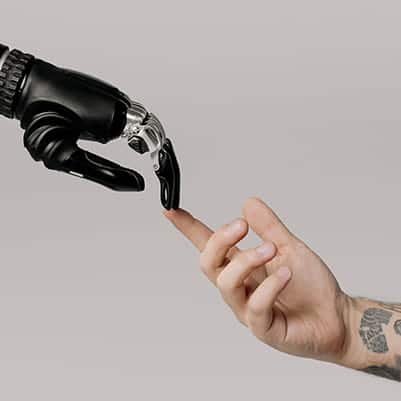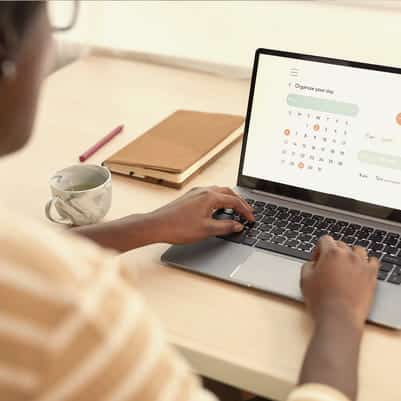Blockchain technology has been one of the main trends of 2021. Every day, more and more companies are joining projects hosted by this type of online information system. Blockchain can be used for lots of different objectives. And therefore, different industries are trying to develop solutions for their own problems with it. In the supply chain industry, the biggest question is how can blockchain improve logistics.
In logistics , blockchain technology can allow companies to trace their products from the exact moment they are made to the exact moment they are delivered. It also helps to improve sharing information with all the parts involved in each process. And even allows businesses to automate actions such as payments. In this article, you will learn about those improvements and more.
Because professionals that work in the logistics and supply chain industry need to be up-to-date with trends nowadays. Our MBA students in International e-Supply Chain Management can confirm that. So, learning about how blockchain can improve logistics can make you a better prospect for a position like Supply Chain Manager, one of the fastest growing positions in the market.
What is blockchain?
Blockchain is a type of information system created in 2008 by an unknown individual under the acronym of Satoshi Nakamoto. It was used to generate the Bitcoin protocol. Mostly known today as the number one decentralized cryptocurrency in the world, the technology has different uses besides its original one.
Blochchain is an information system that has is based in the idea of the distributed ledger. With this distributed ledger, every member of a blockchain network has the entire history of transactions. From the first one to the most recent one. Each of those transactions is called ‘block‘. And every block is coded with information of the one that preceded it, therefore creating a chain of blocks that can be traced at any moment. Now you know the motive behind the name.
The reason blockchain systems are more secure is that any transaction must be cryptographically validated by all the members of the system (or a few designated ones in some cases). That is called reaching the consensus.
Validating the transaction means validating the entire chain, which is cryptographically secured with the codes of each block. And because of that, if someone wanted to cause harm to the network by tampering it, it would have to replicate the entire chain’s existence, something too complicated, expensive and time-consuming to be done easily.
Now you know all of that. But, how can these systems help the logistics industry? To understand why blockchain can help the logistics industry, keep present its main characteristics:
- Decentralized, since everyone has all the information through the distributed ledger, everyone is maintaining the system and no one has its governance, reducing the costs of the intermediaries.
- Immutable, once a block is created its information cannot be changed. That info can be an exchange of money, the movement of a product, a change in its characteristics… Immutability secures the content, since only the information that reaches the consensus of the members is valid.
- Automatic, the networks exists even with only one of the nodes connected and everything programmed in it will run automatically without any other assist.
How can blockchain improve logistics?
Being now a blockchain expert, you will easily understand how blockchain can improve logistics by sharing information. From the most common ways to some which are still being explored, the following ones are some of them:
-
Smart contracts used to automate processes
Smart contracts are the form of contracts that blockchain networks use to automate a process. Besides what the name might suggest, it is more of a computer program than a classic contract. When an agreement is formalized, its clauses are programmed and hosted in the blockchain. Given blockchain characteristics, once it enters the chain it works automatically and its content cannot be changed by any of the parts involved.
The blockchain is what allows the parts to build confidence without even trusting each other. Because there is no middle man between them, like, for instance, a bank or an insurance company. Everybody that interacts with the blockchain will have all the data and only the information everyone agreed to is valid.
Walmart uses blockchain for logistics since 2019 to set up food traceability systems. According to Walmart, this new system created with IBM has allowed them to use a tracing method that reduces the time of finding the origin of one product from 7 days to 2.2 seconds.
Thanks to this blockchain supported method, Walmart can trace every product in case a problem happens in the logistic chain that might create a threat for their buyers. Like food poisoning. The company can automatically find the damaged goods to avoid selling them and know which ones were sold and when.
-
Updated information on the whereabouts of the tracked product
One of the biggest improvements in the field of logistics that blockchain is tracking capabilities. With all the nodes of the network sharing all the information, data can be tracked in real time. For instance, placing tracking devices connected to a blockchain can allow the entirety of a logistic chain to have updated information on the whereabouts of a certain item.
Maersk, the biggest shipping company in the world, has developed the platform TradeLens to work with their suppliers, the carriers and the ports. TradeLens canalizes all the data flow of the containers of a shipment and creates a single register where all the parts involved in the supply chain can trace the information. And since the inputs are automated, it reduces the time and cost of providing the data.
With a permit system, even though every part of the network has all the information, each individual has access to only the data needed for his process. Until the summer of 2021, TradeLens has tracked up to 2.3 billion events about 43.6 million containers moved in the entire world.
Barcelona’s Port is already working with Maersk’s Trade Lens. “Shipment information that we used to have 3 or 4 days before it arrived to the destination is now available a month in advance”, says the head of Sector Process of the Port.
-
Automated payments
Now that we have smart contracts on the equation and know about its automatization characteristics, it’s easy to imagine its uses in the payments’ industry. Blockchain can allow throught smart contracts the ultimate automatization of payments. Being it with tokens such as cryptocurrencies or any fiat currencies.
A well programed smart contract can include clauses that makes these exchanges something without any work involved by any part. And make payments an action that no longer takes days, weeks or months but seconds.
For the logistics industry, a synergy between the tracking capabilities of the blockchain and the introduction of smart contracts can allow the different parts of any process to authorize payments and create invoices in the exact moment a product reaches its destination.
Insurance company AXA created in 2017 its own blockchain app for flight insurance payments, Fizzy. AXA tracked airport data to know if passengers suffered a delay in the flights they had booked. If that happened, the insurance payment was done automatically with a smart contract that sent the money to the client wallet. The user did not even have to make a claim.
Unfortunately, since it used a technology that was not extended at the time, the project was closed in 2019 because of its low usage. Even though it does not exist any more, it created a solution for a logistic problem and started a trend that other companies are now exploring.
-
Accountancy of their own actions
Since the chain has all the accurate info of all the transactions, it can allow businesses to obtain tons of data that can be transformed into transparency policies. The same process that Walmart uses to trace its products can be used by other companies for accountancy with their users.
If business are capable of converting all the data of the logistic process into relevant reports of their work to which users have access, they can be transparent with their consumers.
The NGO World Wildlife Fund is working in the Blockchain Tuna Project to use the technology to end illegal tuna fishing. Combining the use of radio-frequency identification and QR codes, every fish will be registered with a tag that will automatically get information of its origin, the dock where it was captured and the processing facility.
The final buyer will end up will that information. So, it will be clear that its precedence is legal because it can be traced back. With the tuna industry joining the project, blockchain can convert a logistic process into an accountancy policy and a law protection tool at the same time.
A technology that extends to very different industries
Even though this article shows you projects that display how blockchain can improve logistics, the features that the system include makes the technology usable in almost every conceivable field. Today, in the era of data, blockchain can be used in finances, human resources, tourism, law… New uses are being explored constantly.
In case you are interested in mastering your skills as a logistics professional, at BEBS we have different courses like the Master in Integrated Logistics and Supply Chain or the Master in Operation Management and Logistics that can help you do that.




